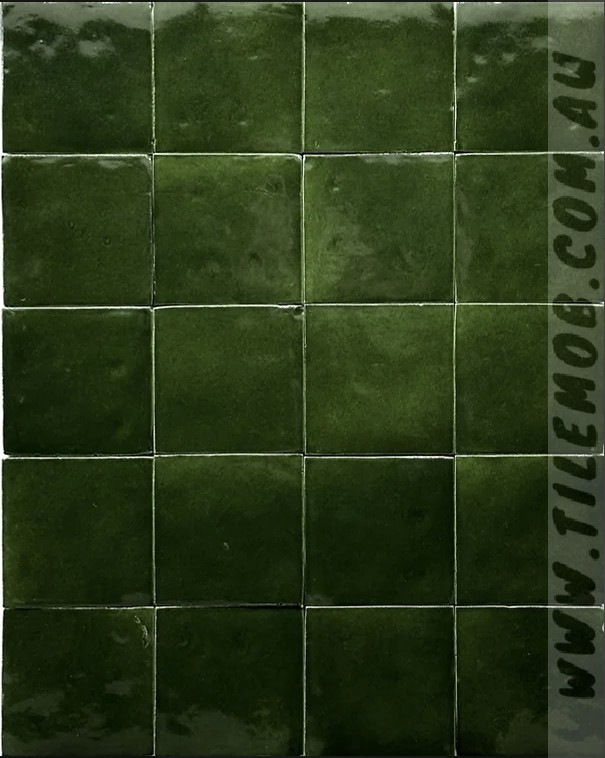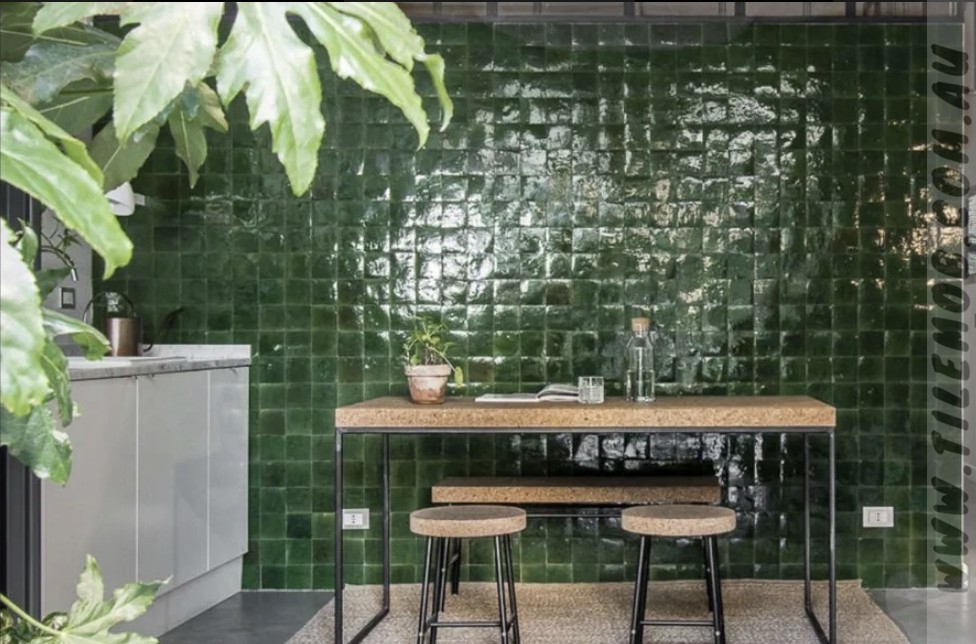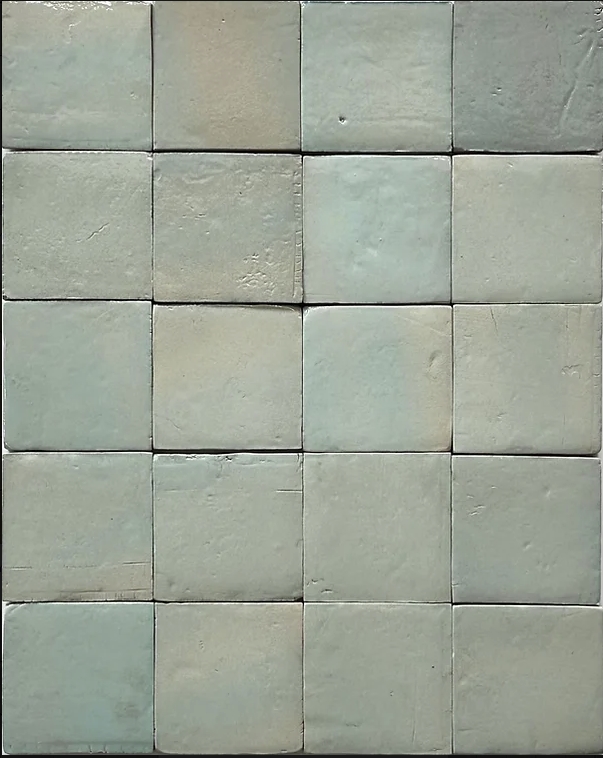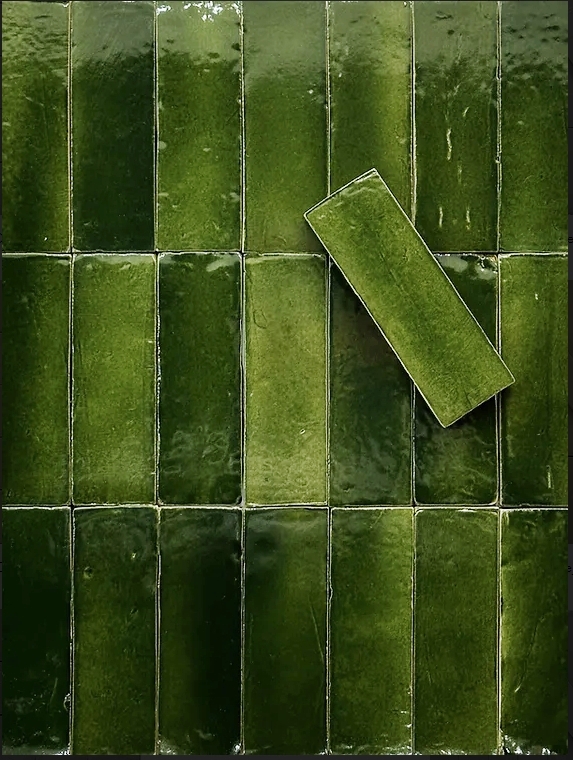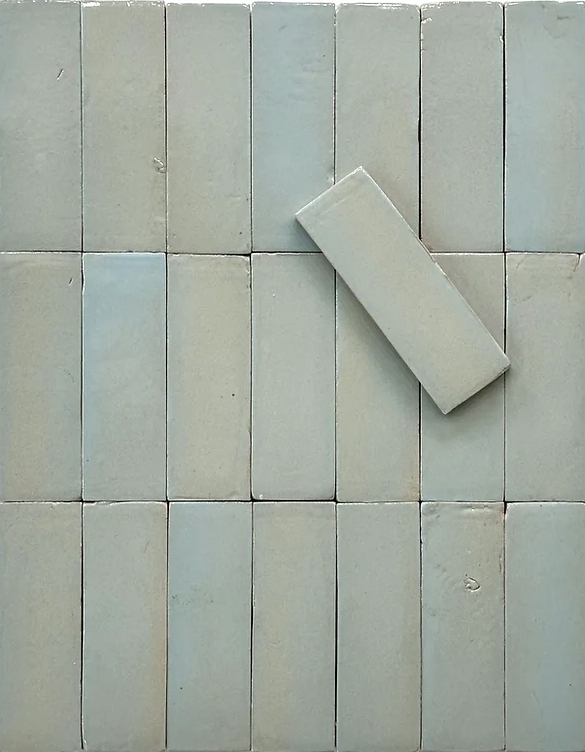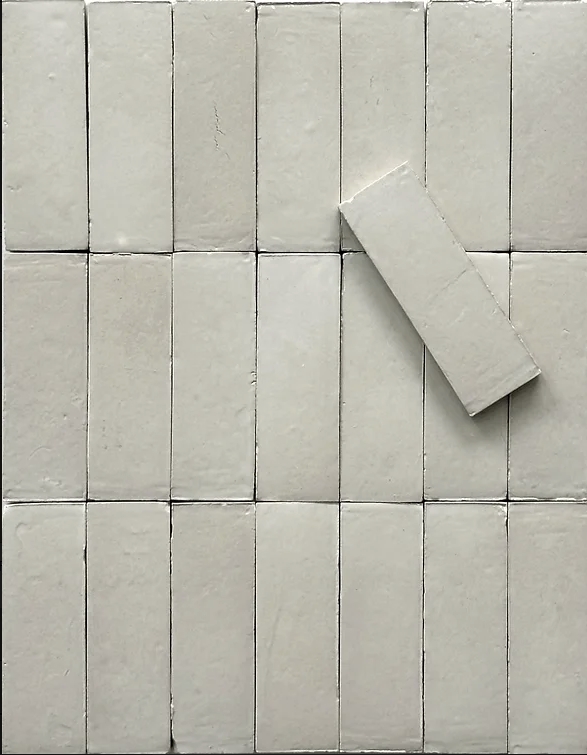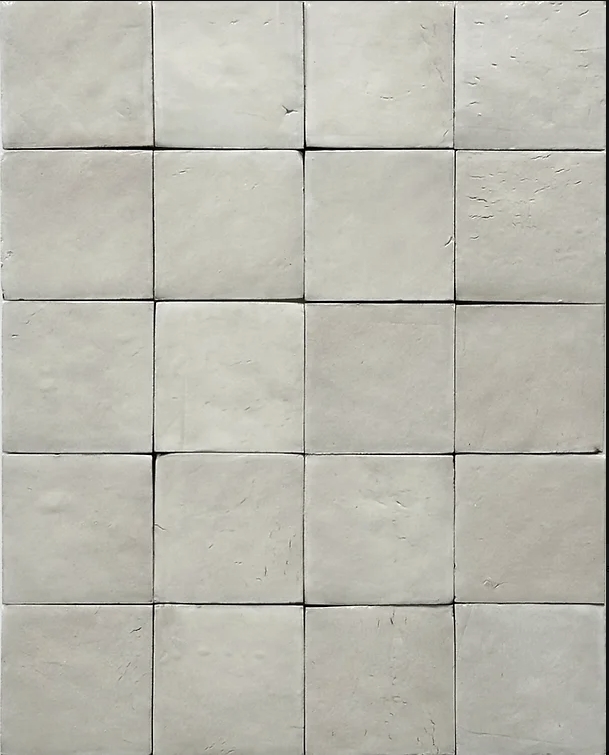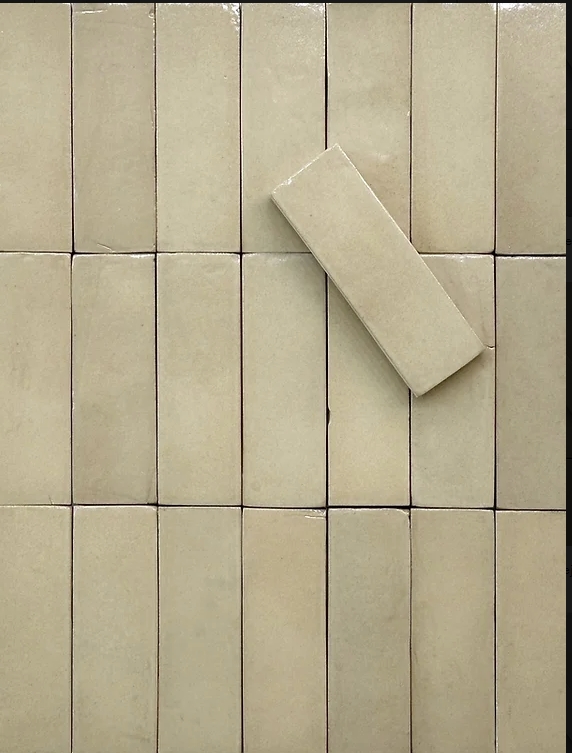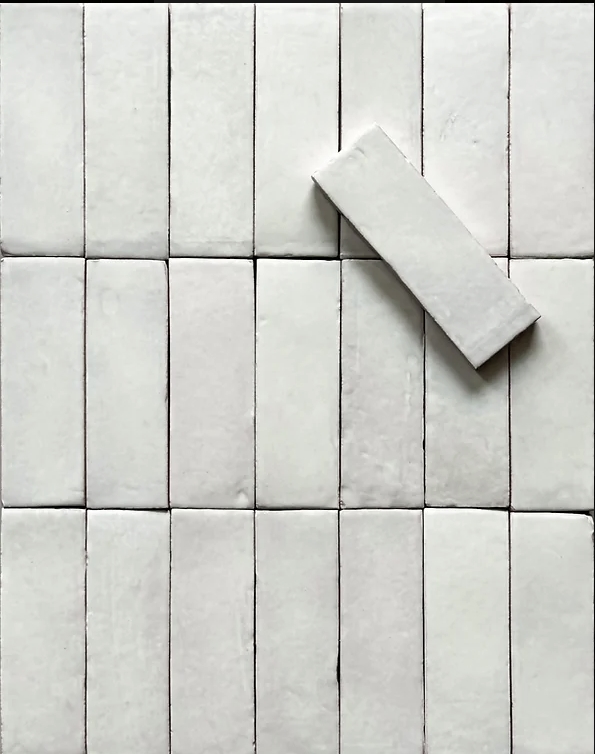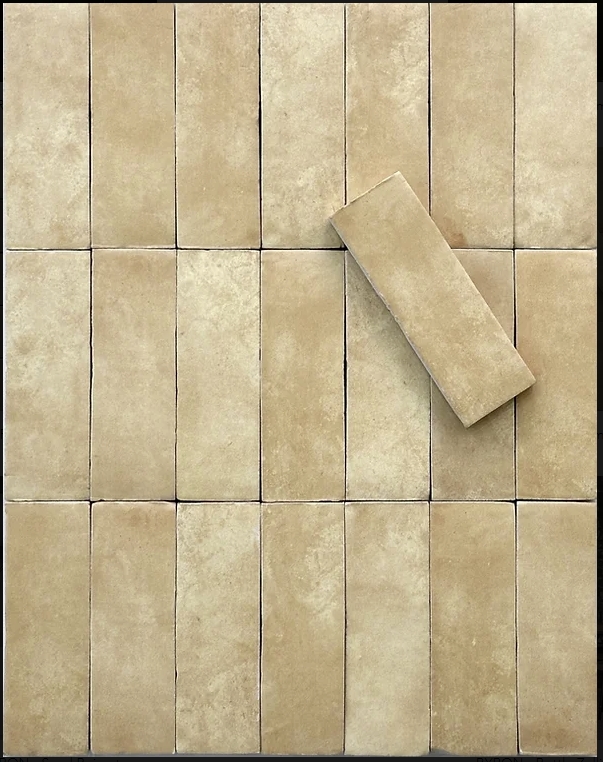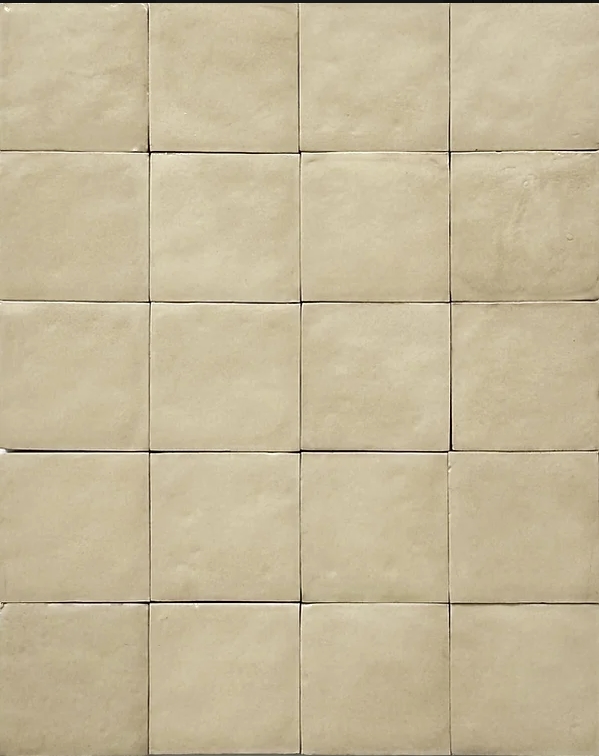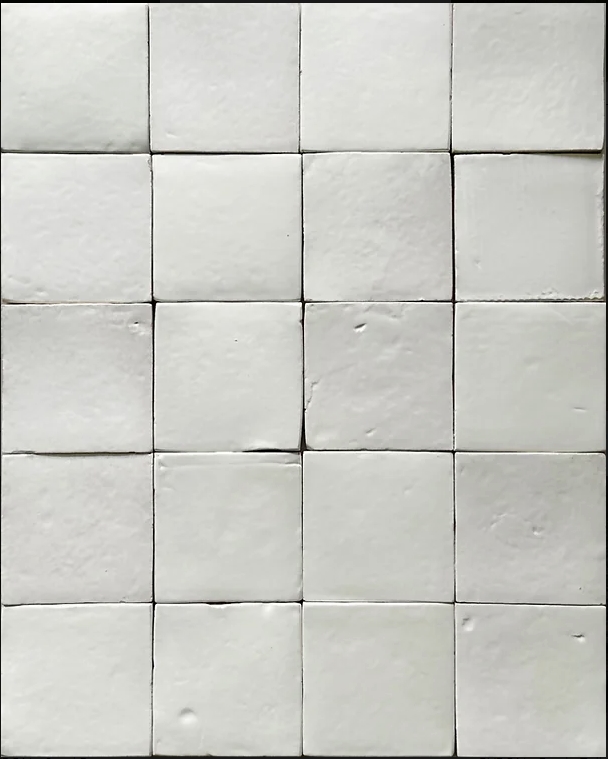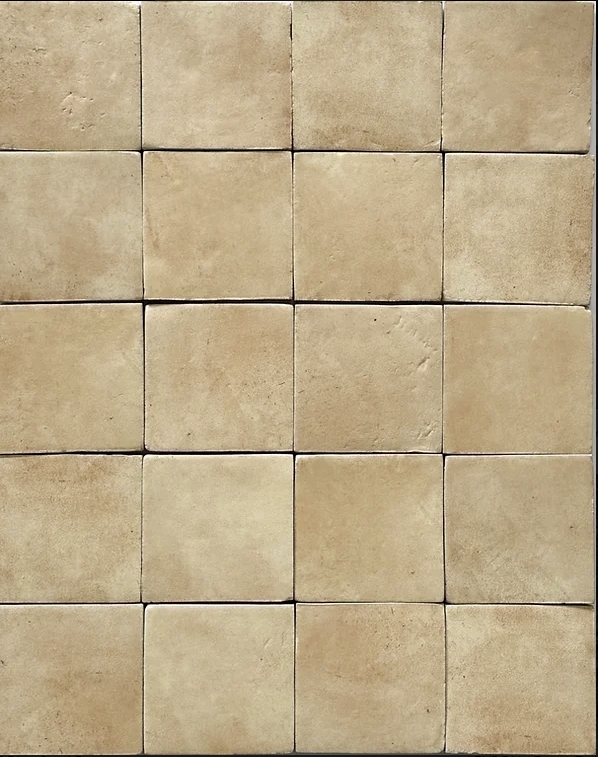Zellige and Bejmat style Handmade Installation Guidelines
Please note that the following information serves as a general guide, and professional
advice from a qualified industry specialist is strongly recommended.
Zellige style tiles are handcrafted, which means you should expect noticeable variations in
thickness, colour, shade, and size. Features such as edge chips, blowouts, scratches, crazing,
and warping are typical for these traditional tiles. These irregularities contribute to the unique
and timeless beauty of handmade tile, offering an organic and natural aesthetic.
IMPORTANT: Due to the inherent colour and shade variations, it's crucial to mix tiles from
all boxes upon delivery and arrange them in the installation area to ensure your desired layout
before beginning installation. Do not install the tiles without first blending them from all
boxes. Additionally, there may be colour and size variations between batches, which can be
challenging to match with subsequent orders. Therefore, please plan your order carefully and
ensure you purchase enough material.
Understanding and appreciating the distinctive characteristics of Zellige style tiles is
important before making a purchase. Features that might be considered flaws or defects in
other tile ranges, such as significant colour variations, differing shapes, and sizes, are not
regarded as flaws in Zellige style handmade tiles.
Please note that returns are not accepted for handmade Zellige style tiles. They are sold with
the understanding that all the characteristics mentioned here have been clearly explained or
demonstrated to the customer.
Traditionally, Zellige style tiles are installed with tight joints, requiring skill and patience
from the installer. The installation process for these historical tiles is slow, as it involves
careful placement and adjustment of the various sizes. Expect some lipping, which is a
normal part of the installation.
Zellige style tiles can be installed with or without grout joints, depending on your preference
or design choice. If using grout, select a fine grout to fill the small gaps typically found in
butt-jointed tiles. When lipping occurs, wipe excess grout away so that it only fills the voids
and does not cover the tile surface.
Glazed tiles do not need sealing, while natural terracotta tiles do.
Before installation, clean any dust and residue from shipping by simply brushing, splashing
of sponging back of tile. Refer to your preferred glue manufacturer's instructions on cleaning
the backs of the tiles. Back buttering with a notch trowel adhesive on the wall is
recommended.
For external corners, we suggest mitre cutting the tiles. A wet saw makes mitre cuts easy, and
the sharp edges can be sanded evenly. Fill the corner void with grout for the finished look.
Handmade tiles often lack engobe, which is a type of slip or clay mixture applied to the
surface of a tile before glazing. Engobe can act as a barrier, providing a smoother surface for
the glaze to adhere to and help prevent the tile from absorbing moisture. When handmade
tiles don't have engobe, a few things can happen:
1. Absorption Through Glaze: Without an engobe layer, the raw clay body of the tile
can be more porous. This means that even with a glaze applied, the tile might absorb
moisture through the glaze. This can be an issue in places where the tile is exposed to
a lot of water, such as in bathrooms or kitchens.
2. Surface Texture and Appearance: The texture of the tile can be more irregular or
rough without the smooth coating that engobe provides. This can affect the final
appearance of the tile and make the glaze look different from what you might expect
on a tile with engobe.
3. Durability: Tiles without engobe might be less durable in some conditions, especially
if the glaze isn't perfectly sealed. The absorption of moisture can lead to issues like
staining, or in extreme cases, the tile might degrade over time.
Overall, handmade tiles without engobe often have a more rustic and artisanal look, but they
may not perform as well in all environments, particularly where moisture resistance is a key
concern.



 Share
Share




